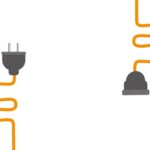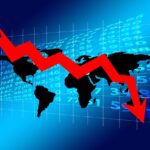Learning from the latest Fortune Global 500
The 2009 Fortune Global 500:
1. Wal-Mart Stores (US)
2. Royal Dutch Shell (Netherlands/UK)
3. Exxon Mobil (US)
4. BP (UK)
5. Toyota Motor (Japan)
6. Japan Post Holdings
7. Sinopec (China)
8. State Grid (China)
9. Axa (France)
10. China National Petroleum
Fortune (August 2010)
Fortune’s Global 500 List is usually worth a look as it tells us interesting things about the world’s business landscape. So what do we discern from the 2009 ranking, released recently?
First, look at the volatility. The top 5 by revenue are still the same as they were a couple of years ago, but the rest are newcomers. Chevron, ING, Total, GM and ConocoPhilips have all fallen out of the Top 10 – in GM’s case precipitously to number 38.
Second, sitting in the top 10 is no sign of an easy life. Two names will have caught your eye: BP and Toyota. Both have faced a woeful year, largely of their own making. Both have been hauled over the coals by regulators and customers over safety issues, and both have demonstrated an astonishing ineptitude in crisis management and public relations. If they don’t get that right, their continued presence in the Top 10 is not certain. BP has just charged costs in excess of Kenya’s GDP to the oil spill…
Third, big is not always beautiful. The chart that ranks revenue is very different from the one that ranks profitability. Only 3 of the revenue top 10 make it to the list of profit kings. The likes of Barclays, Vodafone and Microsoft enter the profitability top 10 on much more modest revenues. Profit, as every serious business thinker knows, is a very different proposition from sales and market share.
And lastly, the real news. The emerging world continues its assault on the Fortune 500. There are three Chinese companies in the top 10, and 46 in the top 500. That, if you’re counting, is more than Britain, Canada and Italy combined. The BRIC countries are growing their presence in this club of global giants fast. America once straddled the Global 500, but now has just 139 companies present, down from 153 a year earlier. Companies from unlikely places like Turkey, Thailand, Venezuela, Malaysia, and Saudi Arabia are beginning to elbow their way into the Global 500. The multipolar world is well and truly with us.
This is at the expense of some famous names of yesteryear. Those that fell out of the bottom this time included Japan Airlines, Goodyear, HBOS, Komatsu, Mitsubishi Motors, Rexel and Nucor. Others remain in the Global 500, but have experienced severe tumbles: Morgan Stanley, Time Warner and Man Group amongst them. Success is much more ephemeral these days. There are just too many people waiting to eat your lunch – all you have to do is take your eye off it.
And finally, a sobering thought for Africa, which is yet to have a player on that list. Indeed the bottom two corporations in the top 500 generate about as much combined revenue as Kenya generates in GDP, which is rather dispiriting. The conventional wisdom is that Africa lacks both the internal market and the external reach to develop a global champion.
Well, that will change. Africa’s consumptive class is finally growing at a spirited rate across the continent, and will fuel demand for many a pan-African success story. As for African companies selling abroad – why not? What exactly stops us from doing it? Only our own imaginations. What Africa needs right now is a serious shot of self-confidence. All the other indicators are moving in the right direction.

Buy Sunny Bindra's new book
The X in CX
here »
Popular Posts
- The pause that saves usJune 8, 2025
- Where are you rushing to—your funeral?June 29, 2025
- How to spot a real thinkerJune 15, 2025
- Built the app, forgot the flowJune 22, 2025
- The first push is the hardestJune 1, 2025















